snorkeling
-
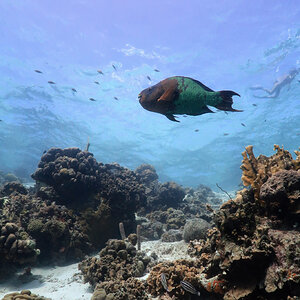
Rainbow parrotfish
The rainbow parrotfish has a relatively wide distribution in the western Atlantic, and can be found from Bermuda through South Florida, the Bahamas and the Caribbean to Venezuela. It inhabits coral reefs, mangroves and sea grass beds in shallow waters.- cheryl
- Media item
- fish parrotfish snorkeling
- Comments: 0
- Category: Travel
-
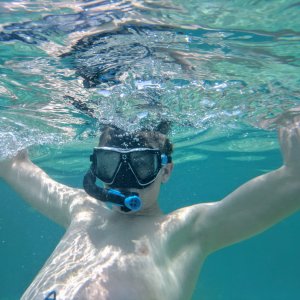
Snorkeling
Snorkeling is the practice of swimming on or through a body of water while equipped with a diving mask, a shaped breathing tube called a snorkel, and usually swimfins. It is a popular recreational activity, particularly at tropical resort locations.- cheryl
- Media item
- snorkeling swimming
- Comments: 0
- Category: Life
-
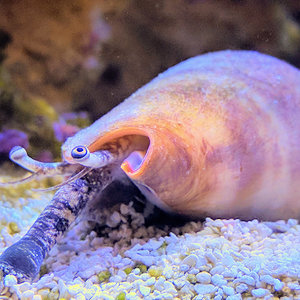
Maurea Maui in Molokini Carter, Maui.
Maurea Maui is a species of sea snail, a marine gastropod mollusk, in the family Calliostomatidae within the superfamily Trochoidea, the top snails, turban snails and their allies.- cheryl
- Media item
- hawaii maui sea snail snorkeling
- Comments: 0
- Category: Travel
-
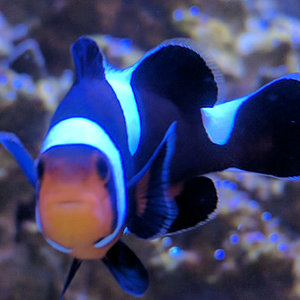
Clownfish at Molokini, Hawaii
Clownfish (Anemonefish) and sea anemones have a symbiotic, mutualistic relationship, each providing a number of benefits to the other. The sea anemone protects the anemonefish from predators, as well as providing food through the scraps left from meals. In return the clownfish defends the anemone.- cheryl
- Media item
- hawaii molokini snorkeling
- Comments: 0
- Category: Travel
-
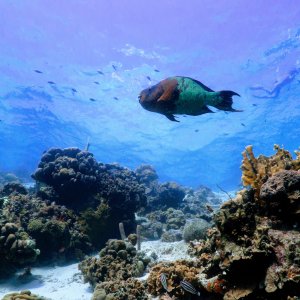
Snorkeling at Klein Bonaire
Klein Bonaire is famous for its corals. Montastraea annularis was the most common coral seen during a 2011 survey.- cheryl
- Media item
- caribbean corals klein bonaire snorkeling
- Comments: 0
- Category: Travel
-
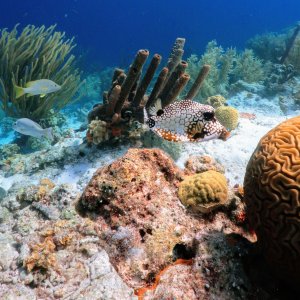
Pufferfish in Klein, Bonaire
The majority of pufferfish species are toxic & some are among the most poisonous vertebrates in the world. Nevertheless, the meat of some species is considered a delicacy in Japan (as 河豚, pronounced fugu), Korea (as 복 bok or 복어 bogeo), & China (as 河豚 hétún) when prepared by specially trained chefs.- cheryl
- Media item
- bonaire caribbean poisonous pufferfish seafood snorkeling
- Comments: 0
- Category: Travel
-
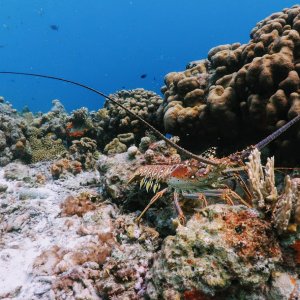
Lobster we saw while snorkeling in Klein Bonaire
Lobsters live up to an estimated 45 to 50 years in the wild, although determining age is difficult. Lobster longevity is limited by their size. Moulting requires metabolic energy and the larger the lobster, the more energy is needed; 10 to 15% of lobsters die of exhaustion during moulting.- cheryl
- Media item
- bonaire caribbean lobster lobsters snorkeling
- Comments: 0
- Category: Travel
-
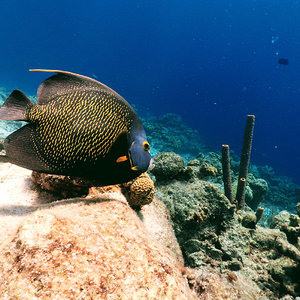
Fish we saw while snorkeling in Klein Bonaire
Klein Bonaire Island and underwater Park. A small uninhabited coral island supporting a sparse cover of shrubs and cacti. Brackish lagoons and fringing coral reefs support a rich marine fauna. The reefs experience heavy diving pressure.- cheryl
- Media item
- caribbean fish klein bonaire snorkeling
- Comments: 0
- Category: Travel
-
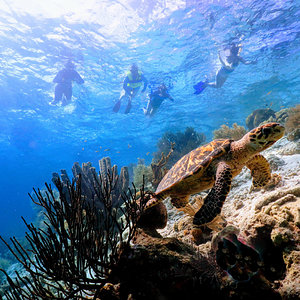
Snorkeling with a Hawksbill sea turtle in Klein Bonaire
The hawksbill sea turtle is a critically endangered sea turtle belonging to the family Cheloniidae. It is the only extant species in the genus Eretmochelys. The species has a worldwide distribution, with Atlantic and Indo-Pacific subspecies—E. i. imbricata and E. i. bissa, respectively.- cheryl
- Media item
- klein bonaire sea turtle snorkel snorkeling
- Comments: 0
- Category: Travel
-
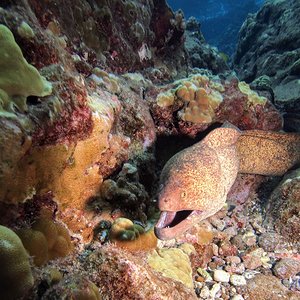
Eel in Molokini, Maui
Most eels live in the shallow waters of the ocean and burrow into sand, mud, or amongst rocks. A majority of eel species are nocturnal, thus are rarely seen. Sometimes, they are seen living together in holes, or "eel pits". Some species of eels also live in deeper water on the continental...- cheryl
- Media item
- eel hawaii maui molokini snorkeling
- Comments: 0
- Category: Travel
-
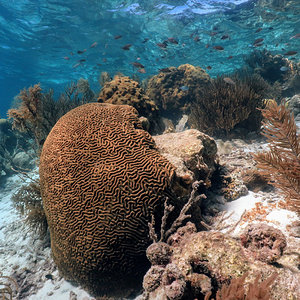
Brain coral at Klein Bonaire
Brain coral is a common name given to various corals in the families Mussidae and Merulinidae, so called due to their generally spheroid shape and grooved surface which resembles a brain. Each head of coral is formed by a colony of genetically identical polyps which secrete a hard skeleton of...- cheryl
- Media item
- bonaire brain coral coral klein bonaire reef snorkeling
- Comments: 0
- Category: Travel
